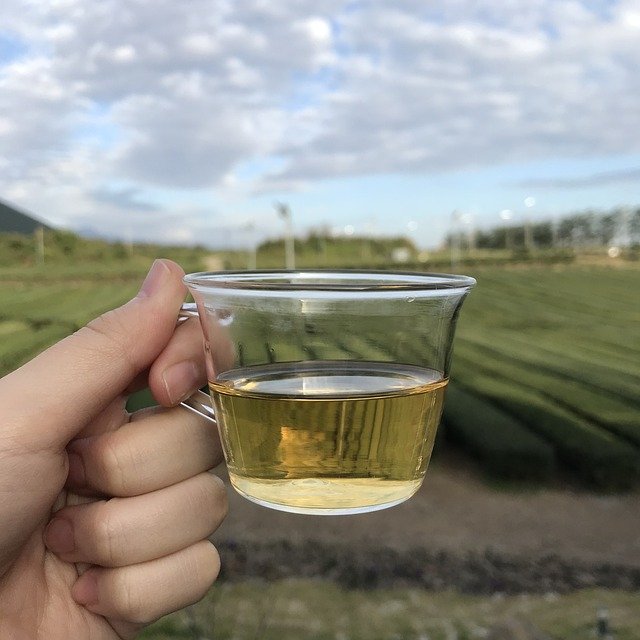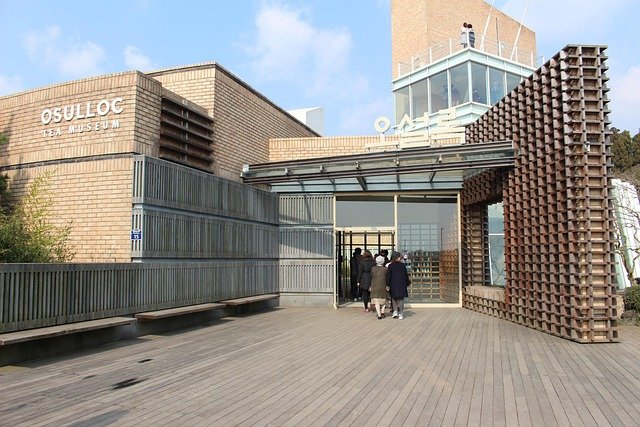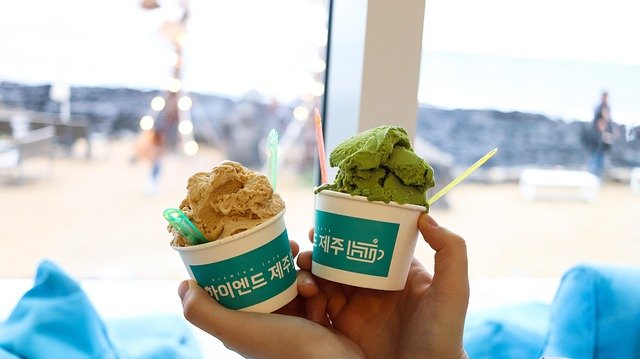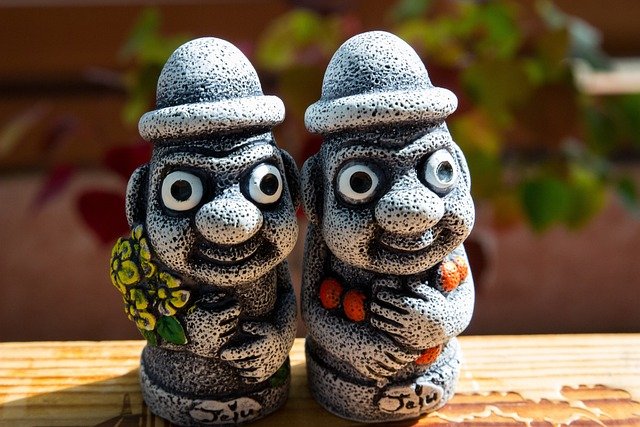
Introduction to O’Sulloc Tea Museum
O’Sulloc Tea Museum, nestled in the breathtaking landscapes of Jeju Island, South Korea, stands as a tribute to the region’s rich tea heritage. This cultural gem is dedicated to the appreciation and promotion of tea, particularly the high-quality green tea that Jeju is renowned for. The museum plays a crucial role in celebrating and preserving the tea culture that has flourished in Korea for centuries, providing visitors with insights into the history, production, and varieties of tea cultivated in the region.
The museum’s architecture is a noteworthy aspect that draws attention, combining modern design elements with traditional Korean aesthetics. The structural layout allows natural light to flood the exhibition spaces, creating a welcoming atmosphere that enhances the visitors’ experience. The sleek lines and open spaces of the museum harmonize with the surrounding tea fields, which feature the lush greenery characteristic of the island. This setting not only enriches the visual appeal but also promotes a sense of tranquility that complements the museum’s thematic focus on serenity found in tea appreciation.
Inside, the O’Sulloc Tea Museum features a diverse range of displays, including interactive exhibits that delve into the origins of tea and its cultural significance in Korea. Guests can enjoy tastings of various types of tea, fully engaging their senses and gaining a deeper understanding of the complexities involved in tea production. The museum also houses a tea shop and a café, where patrons can relax and savor the flavors of freshly brewed Jeju tea amidst the peaceful surroundings. Such experiences make O’Sulloc Tea Museum a must-visit destination for both tea enthusiasts and those seeking a serene escape into nature.

The Rich History of Jeju’s Tea Culture
Jeju Island, known for its volcanic landscape and rich biodiversity, has a historical backdrop that is deeply intertwined with tea cultivation. The island’s tea culture began to take root in the late 19th century, with the introduction of tea seeds from China. This period marked a significant turning point as local farmers recognized the potential of Jeju’s natural environment for cultivating high-quality tea. The island’s unique climatic conditions, characterized by mild winters and abundant rainfall, create an ideal setting for tea plants.
Furthermore, the volcanic soil found on Jeju Island contributes to the distinct flavor profile and aroma of its tea. Rich in minerals, this soil supports the healthy growth of the Camellia sinensis plant, ensuring the production of exceptional tea varieties. Over the years, the cultivation practices have evolved, incorporating both traditional methods and modern agricultural techniques to improve yield and maintain quality. The tea industry on Jeju Island has transformed into a significant part of the local economy and cultural heritage, with tea being revered not only for its taste but also for its health benefits.

A Modern Interpretation of Tradition
The O’Sulloc Tea Museum stands as a striking example of how contemporary design can harmoniously coexist with traditional practices. Located on the picturesque Jeju Island, this institution demonstrates a thoughtful blend of modern architecture and the rich cultural heritage of tea production. Visitors are welcomed into a space that breathes new life into the centuries-old traditions of tea while maintaining a deep respect for the roots of the craft.
Architectural choices at O’Sulloc reflect a commitment to sustainability and innovation. The museum features a sleek, minimalist design that encompasses large glass panels, allowing natural light to flood the interior. This design not only enhances the aesthetics but also symbolizes transparency and openness, inviting patrons to witness the intricate process of tea-making. The architectural lines are clean and fluid, resembling the natural motion of tea as it is brewed, which contrasts beautifully with the more rustic elements associated with traditional tea houses found throughout Korea.
A key aspect of O’Sulloc’s modern interpretation of tea culture is its presentation. The museum’s tea rooms boast contemporary furnishings that are thoughtfully positioned to create an engaging atmosphere. Here, visitors can enjoy tea prepared using advanced methods that honor the essence of traditional practices while integrating novel techniques, such as cold brewing. These innovations elevate the tea experience, offering an array of flavors that reflect not only the terroir of Jeju but also the evolution of tea consumption in modern society.
Furthermore, the museum’s exhibitions utilize modern technology, such as interactive displays and augmented reality features, to educate visitors about the history and significance of Jeju’s tea culture. By doing so, O’Sulloc successfully bridges the gap between past and present, ensuring that the heritage of tea remains vibrant and relevant in today’s fast-paced world.

Tea Tasting Experience: Perfectly Brewed Brews
The tea tasting experience at O’Sulloc Tea Museum offers visitors a delightful exploration of a diverse range of meticulously curated teas. Guests can experience the rich heritage of Jeju’s tea culture through tastings that showcase the nuances of each brew. From traditional green teas to herbal infusions, O’Sulloc presents an impressive collection that caters to a variety of palates. Noteworthy selections include the renowned Jeju green tea, celebrated for its vibrant green hue and refreshing taste, as well as unique offerings such as roasted barley tea and various flavored blends.
The brewing process at O’Sulloc is an integral part of the tea tasting experience. Each type of tea comes with specific brewing techniques tailored to highlight its distinctive flavor profile. Visitors are offered expert demonstrations on how to brew tea properly, ensuring that each cup is steeped to perfection. The knowledgeable staff provides guidance on optimal water temperature and steeping times, empowering guests to recreate the experience at home. This hands-on approach not only enhances appreciation for the fine art of tea making but also engages visitors in the sensory exploration of flavor, aroma, and mouthfeel.
Moreover, the unique flavors of each tea can vary based on factors such as the quality of leaves, geographic origin, and processing methods. O’Sulloc’s expert tea guides encourage attendees to savor the subtleties of each brew, discussing the hints of floral notes or earthy undertones present in different teas. Engaging with the staff during the tasting provides a richer experience, as they share personal anecdotes and insights into the origins of the teas. By connecting with the history and culture behind each brew, guests can gain a deeper understanding of Jeju’s tea heritage, making the tea tasting experience at O’Sulloc not just enjoyable, but profoundly educational.

Quirky Desserts to Complement Your Tea
At O’Sulloc Tea Museum, the experience of sipping tea extends beyond simply tasting—an impressive array of quirky desserts is available, crafted specifically to enhance the pleasure of enjoying fine teas. Each dessert is a reflection of the innovative culinary approach that the museum embodies, marrying tradition and modern creativity. The desserts showcase ingredients sourced from local farms in Jeju, allowing them to harness the island’s unique flavors and textures.
Among the standout offerings is the signature “Green Tea Tiramisu,” an exceptional twist on the traditional Italian dessert that brilliantly incorporates matcha. This vibrant dessert is layered with creamy mascarpone and an essence of green tea, producing a delicate balance of sweetness and slight bitterness that harmonizes beautifully with the earthy tones of O’Sulloc’s teas. Another notable dessert is the “Sweet Potato Cake,” which celebrates Jeju’s famed sweet potatoes. This moist cake is paired with a rich green tea icing, creating an intriguing fusion of local flavors that enthralls the palate.
The creativity does not end there. Guests are often intrigued by the whimsical “Tea Infused Macarons,” which come in various flavors such as jasmine and earl grey, offering a delightful bite-sized indulgence. Each macaron celebrates the art of tea infusion, presenting vibrant colors and flavors that are as visually appealing as they are tasty. The museum also serves a selection of parfaits, layered with rich cream and seasonal fruits, further enhancing the diverse dessert menu. This thoughtful pairing of desserts with teas is not only about taste but also about elevating the overall tea-drinking experience, making every visit to O’Sulloc truly memorable.
Zen Vibes: The Museum’s Atmosphere
Stepping into the O’Sulloc Tea Museum, visitors are instantly enveloped in a serene and tranquil ambiance that reflects the essence of Jeju’s tea heritage. The museum is designed to create a harmonious blend between the indoor exhibitions and the stunning outdoor landscapes, which are equally resonant of peace and calm. The architectural elements of the museum seamlessly integrate with the surrounding nature, employing natural materials such as wood and stone that evoke feelings of warmth and comfort.
Inside the museum, the clean lines and minimalist design promote an atmosphere of simplicity and clarity. Open spaces are thoughtfully fashioned to allow natural light to filter through expansive windows, creating a bright yet tranquil setting that invites visitors to linger. The carefully organized layout of the exhibits guides guests through a journey of discovery, encouraging them to pause and reflect on the art of tea-making while appreciating the beauty of its history. Each section is designed to not only inform but also to provide a moment of calm amidst the bustle of daily life.
As one moves to the outdoor areas, the zen-like environment continues, with meticulously maintained gardens that feature lush greenery and thoughtfully placed sculptures that enhance the natural beauty of the site. The pathways are lined with tea plants, providing visitors with an immersive experience of the landscape that produces this revered beverage. Benches are placed throughout the gardens, allowing guests to take a break and enjoy a moment of peace while sipping on refreshing tea. This connection with nature enhances the overall visitor experience, making each moment spent at the O’Sulloc Tea Museum a chance to reflect and rejuvenate.
Workshops and Events: Engaging with Tea
The O’Sulloc Tea Museum is not only a custodian of Jeju’s rich tea heritage but also a vibrant hub of interactive experiences that engage visitors in the art and culture of tea. Among the key offerings are a variety of workshops designed to cater to different levels of interest and expertise. These hands-on classes allow participants to delve into the craft of tea-making, from selecting the right leaves to mastering steeping techniques that enhance the flavors unique to Jeju’s tea varieties.
One of the most popular workshops is the tea-making class, where attendees are guided by knowledgeable instructors who emphasize the importance of tradition and skill in tea preparation. During these sessions, visitors learn how to properly brew different types of tea, including the famed Jeju green tea, enhancing their appreciation for the subtleties in taste and aroma. This immersive experience not only educates participants but also fosters a deeper connection to tea culture.
In addition to workshops, the O’Sulloc Tea Museum hosts regular tea-tasting events that feature a meticulously curated selection of teas grown on the island. These tastings provide an opportunity for participants to explore a range of flavors and learn how to pair tea with various foods, enriching their palate while gaining insight into how geographical and climatic factors influence tea production.
Cultural events, often aligned with local festivals or seasons, further enhance the engagement levels and showcase the versatility of tea in different contexts. The museum’s calendar typically includes events that highlight traditional tea ceremonies, competitions, and even art exhibitions, all of which use tea as a central theme. Through these diverse offerings, visitors can engage with the full spectrum of Jeju’s tea culture, making their experience at the O’Sulloc Tea Museum both informative and enjoyable.
Visitor Tips: Making the Most of Your Visit
Planning a trip to the O’Sulloc Tea Museum promises a unique experience steeped in the rich heritage of Jeju’s tea culture. To enhance your visit, consider a few practical tips that will help you navigate and fully enjoy this enticing destination. Firstly, the best time to visit the museum is during the early spring or late autumn months. These periods not only offer mild weather suitable for exploration but also allow visitors to witness the stunning natural beauty of the surrounding tea fields. Weekdays tend to be less crowded than weekends, making for a more peaceful and engaging experience.
Accessibility is another consideration for visitors. The museum is conveniently located near Seogwipo City, making it easily reachable by public transport, including local buses and taxis, or even by rented vehicles. Driving gives you the added benefit of exploring the picturesque scenery of Jeju Island along the way. Upon arrival, expect to spend several hours exploring the various exhibits that showcase the history and significance of tea production in Korea.
During your visit, immerse yourself in the numerous tasting sessions offered throughout the day. These tastings highlight different types of teas, allowing guests to savor the nuanced flavors that O’Sulloc is renowned for. To maximize your experience, consider participating in a guided tour, which can provide valuable insights into the tea-making process and the museum’s philosophy. Additionally, don’t overlook the charming tea shop and café on-site where you can enjoy a selection of tea-infused pastries and beverages—perfect for refueling after an enriching visit.
Lastly, ensuring you check the museum’s schedule for any special events or exhibitions can further enhance your visit. With these tips in hand, you are well-equipped to savor every moment at the O’Sulloc Tea Museum, making your journey into Jeju’s tea heritage a truly unforgettable experience.
Conclusion: A Must-Visit for Tea Lovers
In the heart of Jeju Island, the O’Sulloc Tea Museum stands as a testament to the enriching heritage of tea culture, seamlessly blending traditional practices with modern innovations. This remarkable location not only appeals to seasoned tea aficionados but also captivates those who are new to the world of tea. The museum offers an inviting atmosphere that encourages exploration and appreciation of tea, making it a noteworthy destination for casual visitors and serious enthusiasts alike.
The O’Sulloc Tea Museum’s commitment to showcasing the significance of tea in both historical and contemporary contexts sets it apart. Guests can delve into interactive exhibits that illustrate the journey of tea from cultivation to consumption. This hands-on experience allows visitors to connect with the deep-rooted traditions of tea-making while also understanding the innovative methods that O’Sulloc employs to enhance tea production. The museum presents an extraordinary opportunity to learn about Jeju’s unique tea varieties through tastings and guided tours, enriching one’s understanding of the beverage.
Furthermore, the stunning surroundings of the museum enhance the overall experience, providing a tranquil backdrop for reflection and relaxation. Visitors can enjoy their tea amidst lush green tea fields, creating a serene environment that complements the calming effects of savoring a cup of tea. The presence of a tea shop and café within the museum allows individuals to taste and purchase a wide range of premium teas, further enriching their cultural journey.
In conclusion, O’Sulloc Tea Museum is a must-visit for anyone seeking to explore the intricate world of tea. With its extraordinary combination of tradition and modernity, along with a refreshing environment, it promises an unforgettable experience that awakens the senses and deepens one’s appreciation for this beloved beverage.
Hot✈️ Seogwipo Osorokstay (Jeju Seogwipo), Jeju, South Korea
Exploring Jungmun Tourist Complex: The Ultimate Family Getaway




